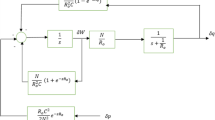Abstract
Model predictive control (MPC) is a popular strategy for active queue management (AQM) that is able to incorporate physical and user defined constraints. However, the current MPC methods rely on explicit fluid model of TCP behavior with input time delay. In this paper, we propose a novel AQM algorithm based on data-driven predictive control, called Data-AQM. For Internet system with large delay, complex change and bad disturbance, data-driven predictive controller can be obtained directly based on the input–output data alone and does not require any explicit model of the system. According to the input–output data, the future queue length in data buffer, which is the basis of optimizing drop probability, is predicted. Furthermore, considering system constraints, the control requirement is converted to the optimal control objective, then the drop probability is obtained by solving the optimal problem online. Finally, the performances of Data-AQM are evaluated through a series of simulations.









Similar content being viewed by others
References
Floyd, S., & Jacobson, V. (1997). Random early detection gateways for congestion avoidance. IEEE/ACM Transactions on Networking, 4(1), 1–22.
Clark, D. D., & Fang, W. (1998). Explicit allocation of best effort packet delivery service. IEEE/ACM Transations on Networking, 6(4), 362–373.
Branden, B., Clark, D., & Crowcroft, J. (1994). Recommendations on queue management and congetion avoidance in the Internet, RFC2309.
Ren, F. Y., Ren, Y., & Shan, X. M. (2002). Design of a fuzzy controller for active queue management. Computer Communications, 25(9), 874–883.
Eguchi, T., Ohsaki, H., & Murata, M. (2003). On control parameters tuning for active queue management mechanisms using multivariate analysis. In Proceedings of Symposium on Applications and the Internet (pp.120–127).
Misra, V., Gong, W. B., & Towsley, D. (2000). Fluid-based analysis of a network of AQM routers supporting TCP flows with an application to RED. In Proceedings of ACM/SIGCOMM.
Hollot, C. V., Misra, V., Towsley, D., & Gong, W. B. (2002). Analysis and design of controllers for AQM routers supporting TCP flows. IEEE Transactions on Automatic Control, 6(47), 945–959.
Jinsheng, S., Guanrong, C., King-Tim, K., Chan, S., & Zukerman, M. (2003). PD-controller: A new active queue management scheme. Proceedings of IEEE GLOBECOM03, 6, 3103–3107.
Kim, K. B. (2006). Design of feedback controls supporting TCP based on the state-space approach. IEEE Transactions on Automatic Control, 7(51), 1086–1099.
Wang, J. X., Rong, L., & Liu, Y. H. (2008). A robust proportional controller for AQM based on optimized second-order system mode. Computer Communications, 31(10), 2468–2477.
Kahe, G., Jahangir, A. H., & Ebrahimi, B. (2014). AQM controller design for TCP networks based on a new control strategy. Telecommunication Systems, 57, 295–311.
Wang, P., Chen, H., Ma, Y., & Yang, X. P. (2012). Design and analysis of model predictive controller for active queue management. ISA Transactions, 51, 120–131.
Rawlings, J. B. (2000). Tutorial overview of model predictive control. IEEE Control Systems Magazine, 3(20), 38–52.
Kadali, K., Huang, B., & Rossiter, A. (2003). A data driven subspace approach to predictive controller design. Control Engine Practice, 11(3), 261–278.
Lu, X. H., chen, H., Wang, P., & Gao, B. Z. (2011). Design of a data-driven predictive controller for start-up process of AMT vehicles. IEEE Transactions on Neural Networks, 22(12), 2201–2212.
Overschee, P. V., & Moor, B. D. (1995). A unifying theorem for three subspace system identification algorithms. Automatica, 31(12), 1853–1864.
Borhan, H., & Hodzen, E. (2015). A robust design optimization framework for systematic model-based calibration of engine control systems. Journal of Engineering for Gas Turbines and Power, 137(11), 111601.
Chen, H., Xu, F., & Xi, Y. (2012). Field programmable gate array/system on a programmable chip-based implementation of model predictive controller. IET Control Theory and Applications, 6(8), 1055–1063.
Acknowledgments
This work is supported by the National Nature Science Foundation of China (No. 61403159), the Jilin Provincial Science Foundation of China (No. 20140520063JH) and the Science and Technology Research Planning Project of the Education Department of Jilin Province (No. 2016431).
Author information
Authors and Affiliations
Corresponding author
Rights and permissions
About this article
Cite this article
Wang, P., Zhu, D. & Lu, X. Active queue management algorithm based on data-driven predictive control. Telecommun Syst 64, 103–111 (2017). https://doi.org/10.1007/s11235-016-0162-6
Published:
Issue Date:
DOI: https://doi.org/10.1007/s11235-016-0162-6




